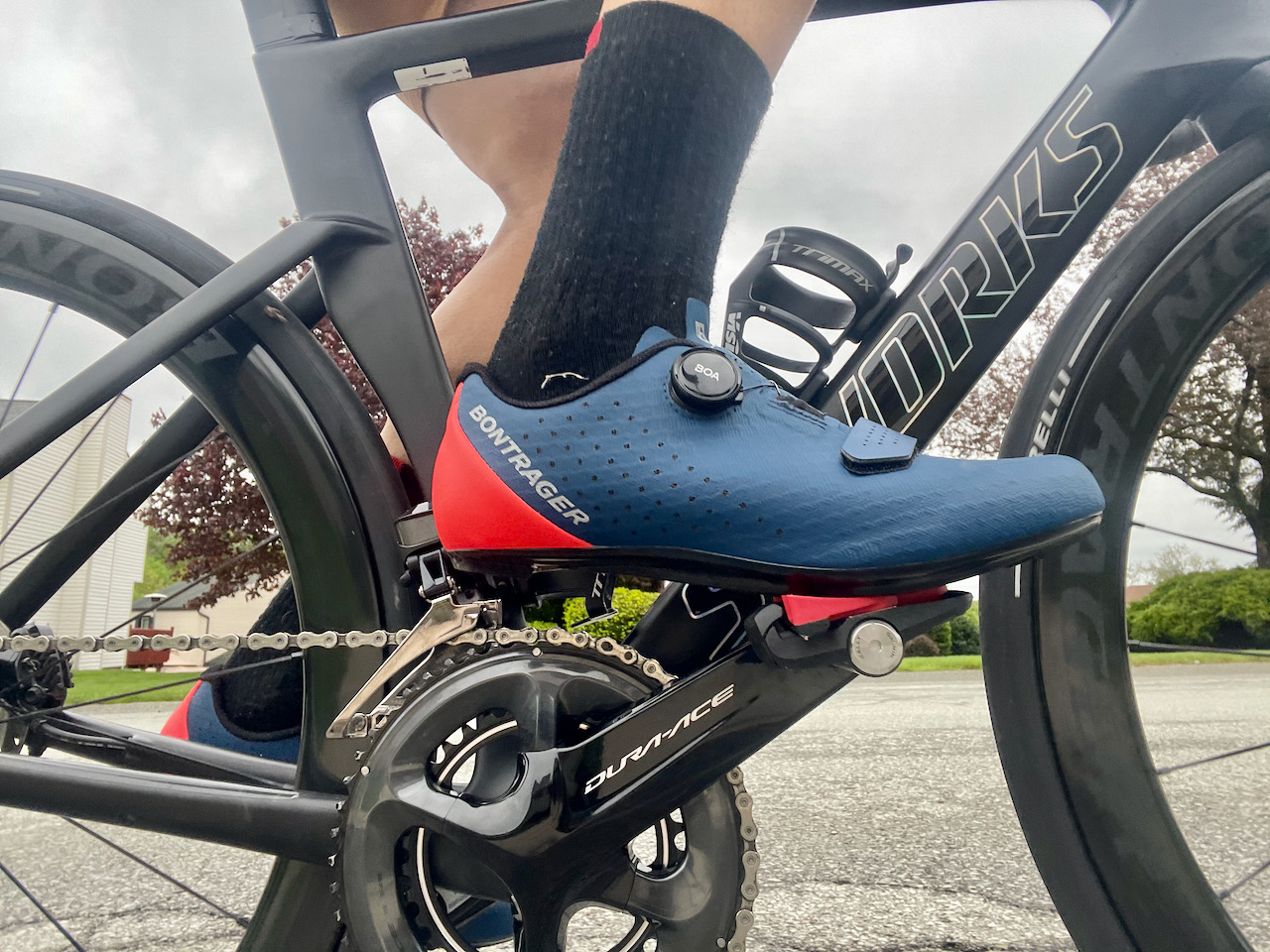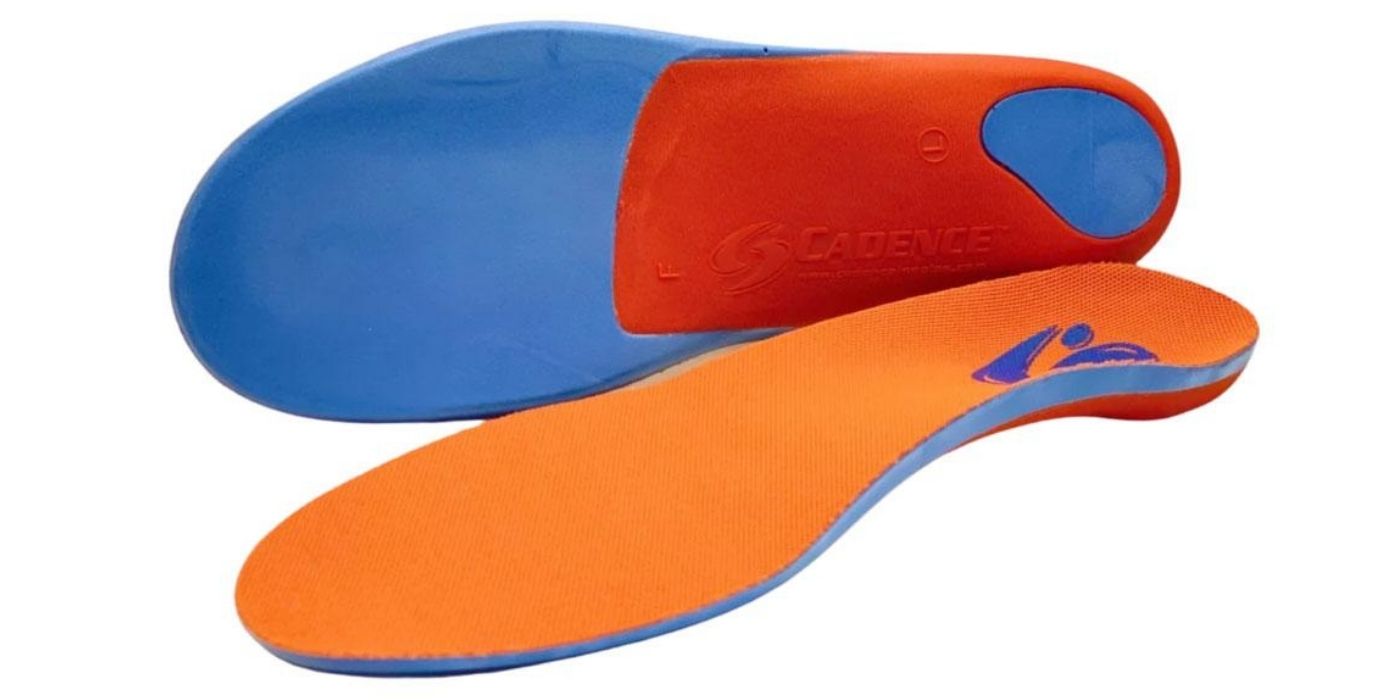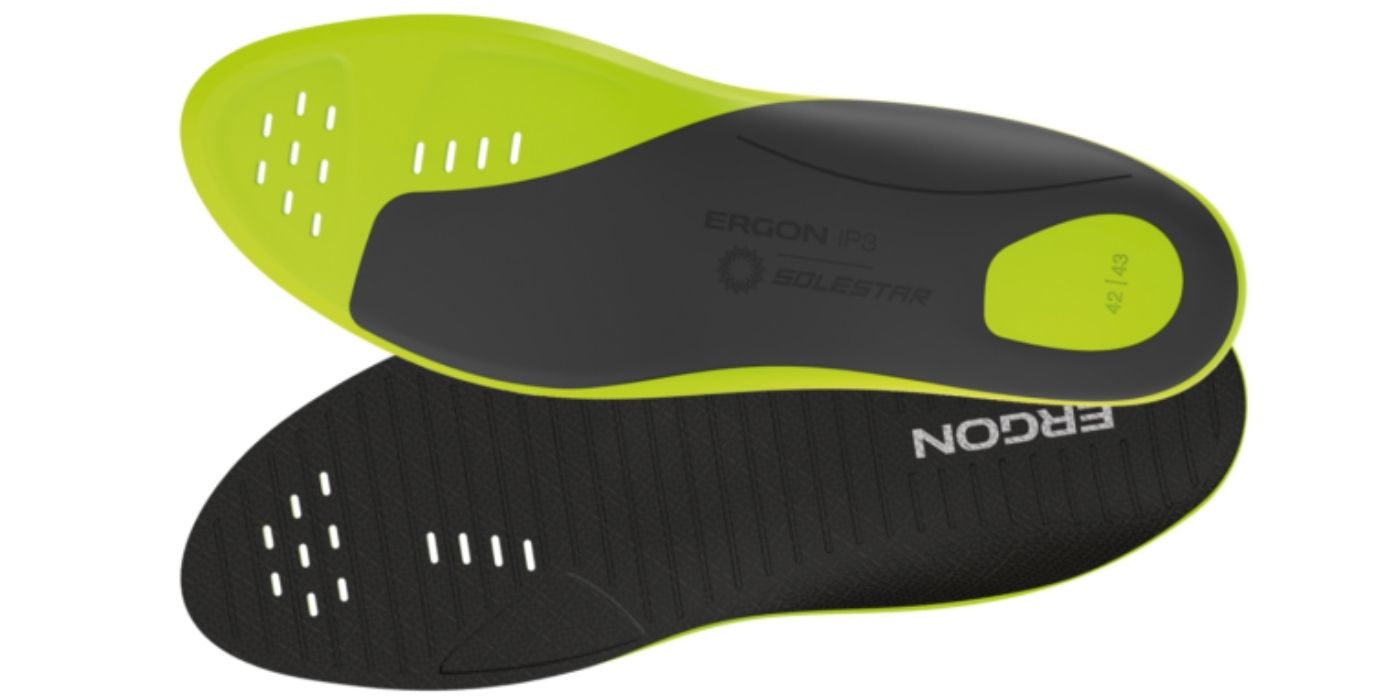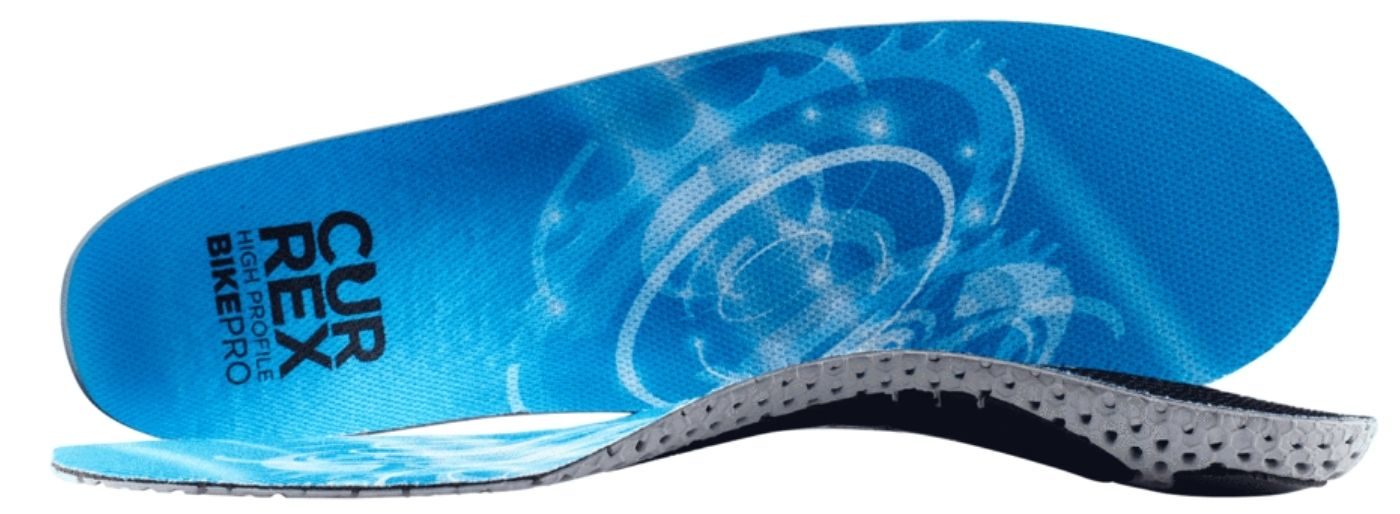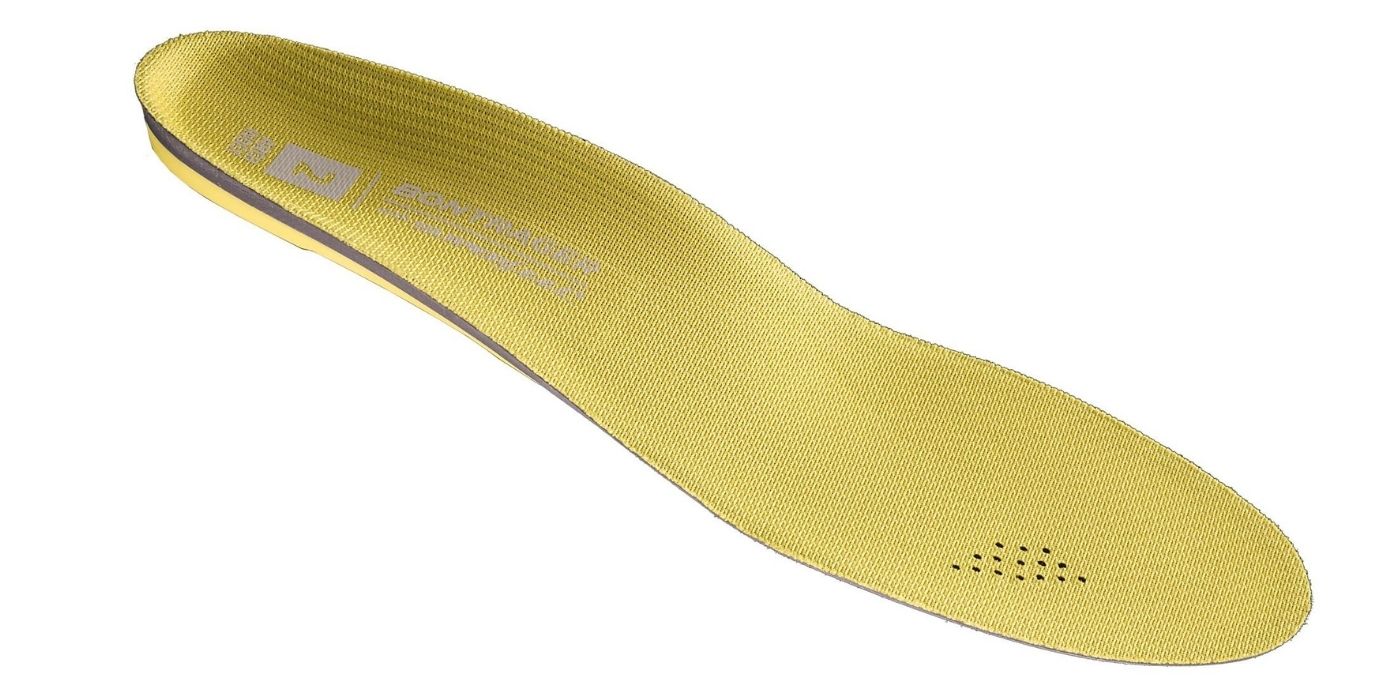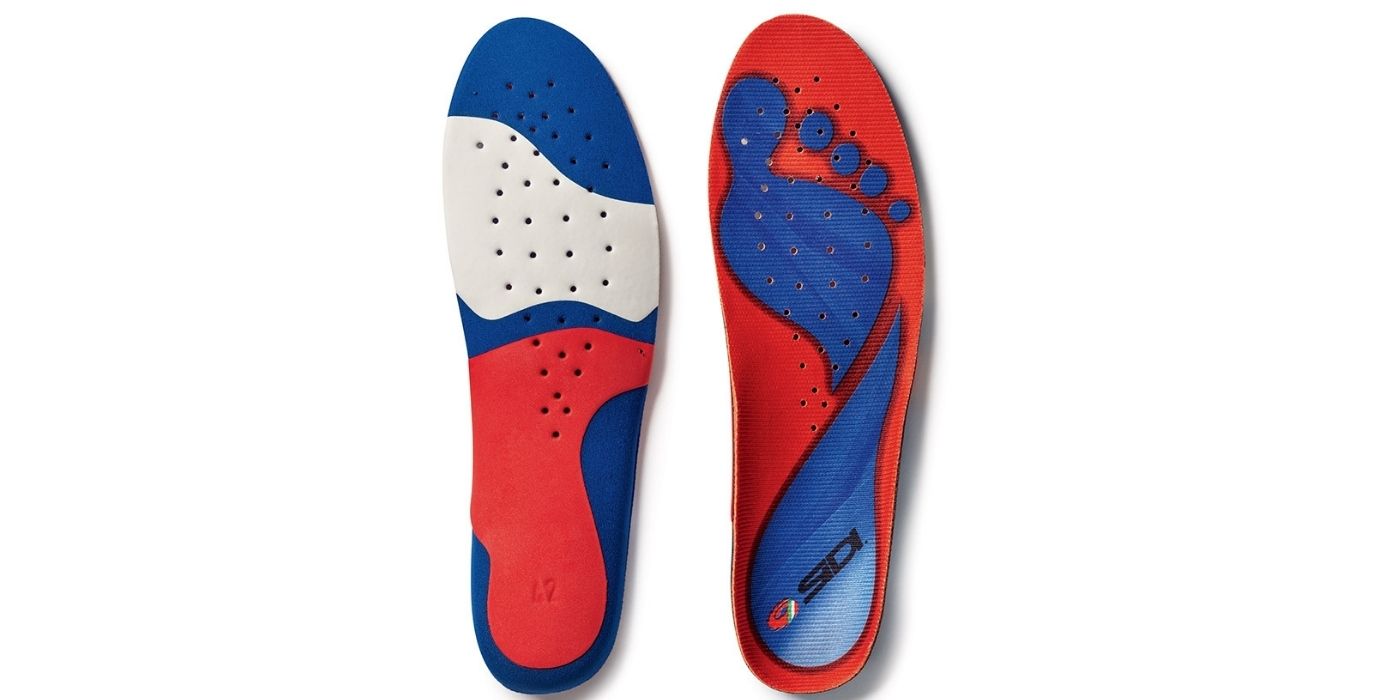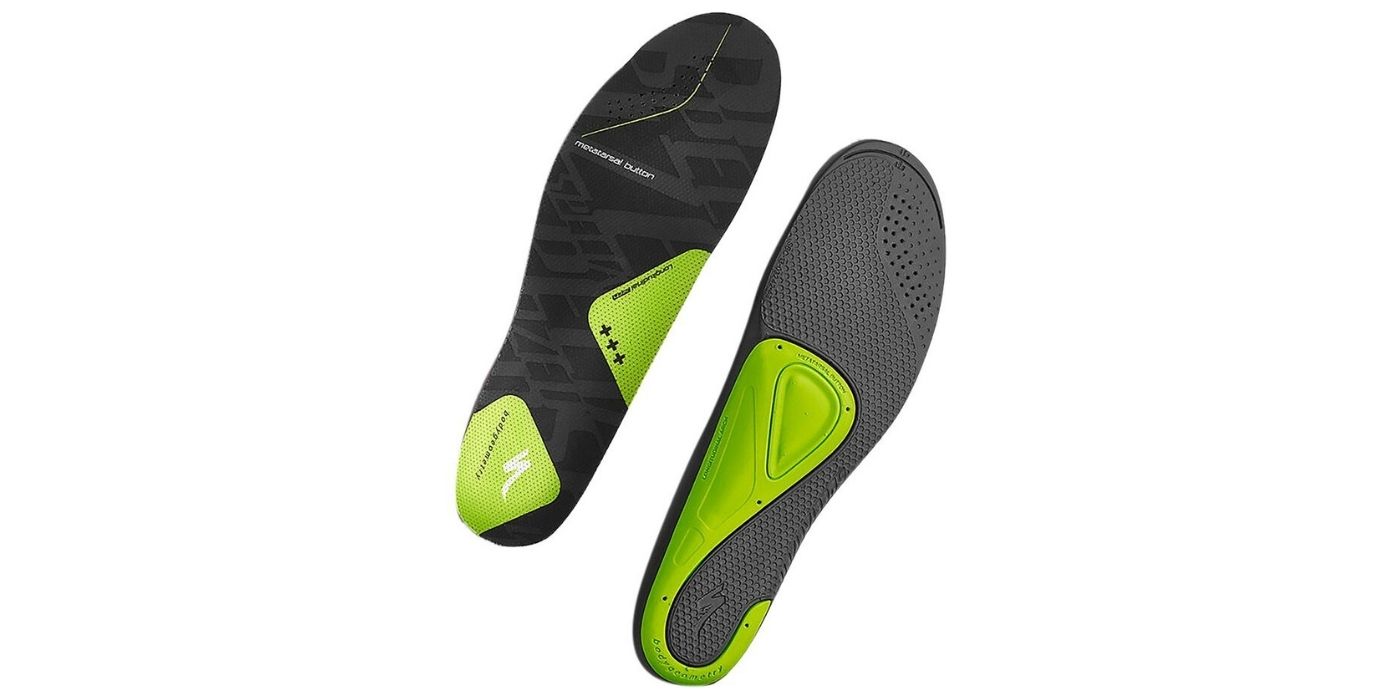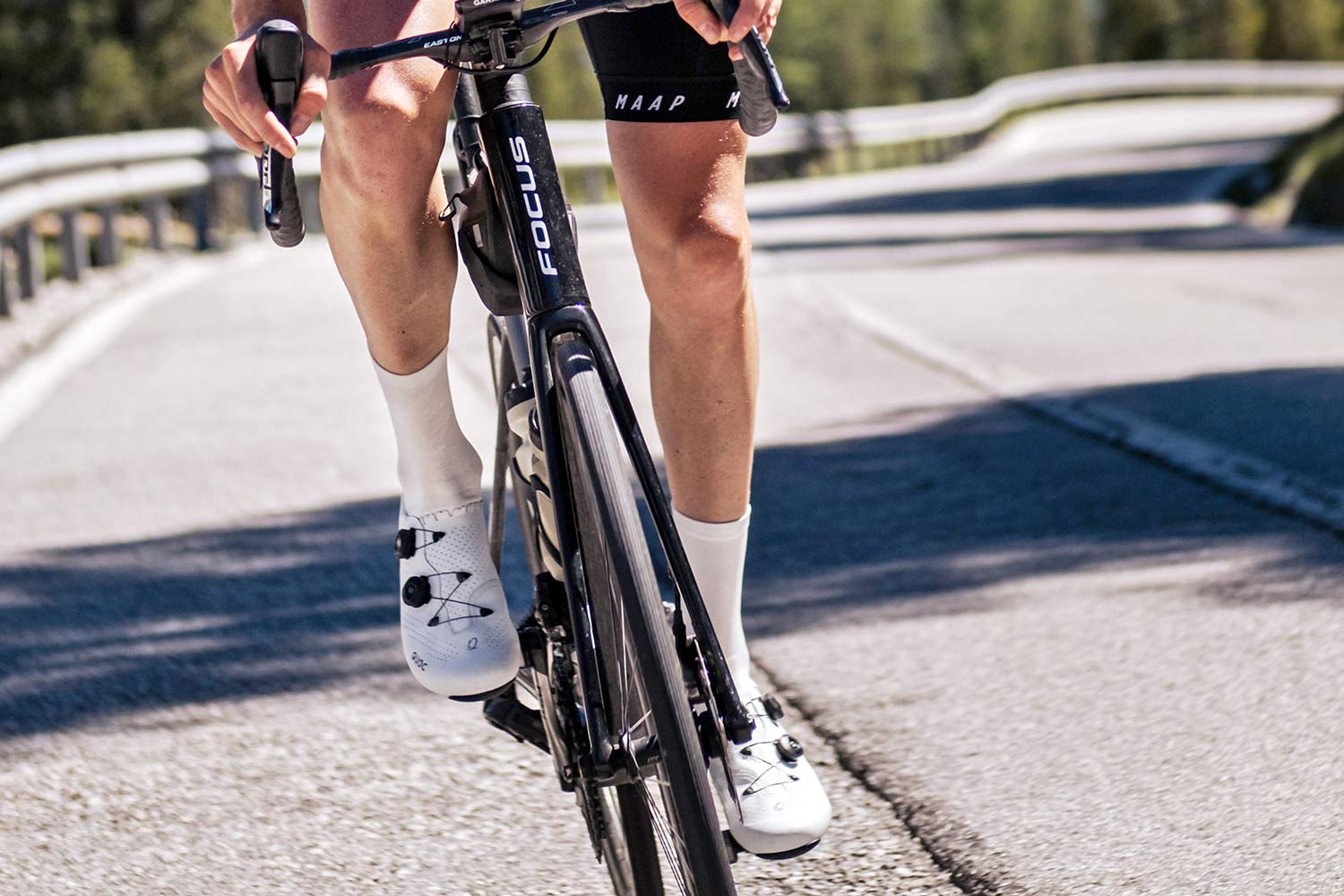While many cyclists will never even think about changing the insoles to their cycling shoes, a new set of supporting insoles can make a huge difference to overall riding comfort. From correcting knee pain to adding arch support and doing away with those dreaded hotspots, a change to a more supportive insole might be the small tweak that saves your bike fit.
Even if you don’t necessarily deal with foot pain issues, a new set of insoles can also serve a practical purpose: It can make a smelly pair of old cycling shoes significantly less odorous! Here, we’re looking at our favorite options for every type of foot and shoe…
Cadence Original Orange Insoles
The Cadence Original Orange is one of the more traditional insoles that cyclists have used for years, and we like it for the utter simplicity. It’s a fairly standard insole that provides semi-rigid orthotic support plus shock-absorbing comfort for your heel and forefoot, and we’ve found it increases comfort on the bike exponentially.
Especially for cyclocross racers or mountain bikers who find themselves frequently hiking their bikes, the Original Cadence insole will provide foot support whether you’re pedaling or running. And we also appreciate that unlike some of the other options on this list, it has a huge range of sizes starting as small as a Men’s 3.5/Women’s 4.5, making it much more inclusive.
- Material: Semi-rigid nylon and foam
- Weight: 2.3 ounces (65.2g)
- Sizes: Men’s 3.5-16 (Women’s 4.5-13)
- MSRP: $48
PROS: Comfortable, ideal for running with the bike
CONS: Not specifically for arch support
Solestar Ergon IP3 Insoles
We love the Ergon IP3 cycling insoles from SoleStar because of the research and development behind these simple fiberglass and plastic insoles. SoleStar is in the business of developing insoles for different uses, while Ergon is, well, in the cycling ergonomics space.
These insoles are ideal for cycling shoes because they’re stiff enough to stay put, and they instantly turn even a budget shoe into something a little racier by improving the stiffness and offering a tweaked foot position that brings your knee into optimal alignment.
- Material: Fiberglass and plastic
- Weight: 3.17 ounces (89.9g)
- Sizes: 36-46 European sizing (men’s)
- MSRP: $39
PROS: Adds stiffness while maximizing comfort
CONS: Heavy
Currex BikePro Insoles
Like SoleStar, Currex is an insole-focused brand that creates sport-specific insoles for different styles of shoes. We appreciate that Currex, unlike some of the brands on this list, has a huge range of sizes from XS to XXL (use their online size checker to decide which size you need) as well as three arch profiles—high, low, and mid.
The Currex BIKEPRO insoles were specifically designed for optimum power transfer between you and your bike, and their perforated structure boosts airflow to your feet, so if you’re a heavy sweater, they may help alleviate some discomfort on hot rides. And at 1.37 ounces, they’re ultra-lightweight.
- Material: Drytech top cover, EVA foam rubber, and memory foam
- Weight: 1.37 ounces (38.8g)
- Sizes: XS-XXL plus 3 arch profile options
- MSRP: $65
PROS: More sizing options for different arch types, lightweight
CONS: Expensive
Bontrager inForm BioDynamic Insoles
These insoles may look the most unassuming out of the bunch, but they have an impressive amount of tech behind them. Developed in conjunction with insole brand Superfeet, Bontrager’s inForm BioDynamics Insoles come in three styles: High, Low, and Mid-arch. The 3D Arch Pillar stabilizes your arches to allow for better knee alignment, while the heel cup keeps your foot from sliding side to side as you work your way up the climb.
These are soft-ish, which makes them easier to trim to fit well in any cycling shoe, not just ones from Bontrager. That said, they do fit perfectly in Bontrager’s shoes, and these really are some of the most supportive insoles we’ve tried.
- Material: EVA foam and nylon
- Weight: N/A
- Sizes: 36-48 in European sizing (men’s), plus 3 arch profile options
- MSRP: $40
PROS: More sizing options for different arch types
CONS: None, really
Giro Prolight Shoe SuperNatural Fit Kit
Of all the insoles on this list, we specifically love Giro’s Prolight SuperNatural Fit Kit because you don’t need to know exactly what type of arch you have in order to get a pair with ideal arch support. Let’s be honest, most of us don’t have a great idea about exactly what kind of arch we have, unless we’re already wearing custom orthotics in everyday life.
The Giro Prolight SuperNatural Fit Kit comes with three different levels of arch support—small, medium and large—that velcro to the insole in order to customize the fit to your foot. We also appreciate that Giro has added the X-Static top sheet, which adds a antimicrobial layer in order to keep odors at bay. Despite these add ons, they’re ultra-light and ultra-thin, so you won’t even notice that you’re using them.
- Material: Expanded polypropylene, X-Static top sheet
- Weight: N/A
- Sizes: 39-49 in European sizing (men’s), plus customizable arch support
- MSRP: $40
PROS: Easy to try different arch options
CONS: Smallest size still large for most women
SIDI Soletta Memory Insole
We love SIDI shoes because of how easily replaceable many of their parts are, making it possible to run the same pair of shoes for a decade, only replacing small pieces as they break or wear out. From the BOA-style clips and straps to pieces of the sole of the shoe to the insoles, SIDI allows for a lot of small tweaks.
And one of those is the switch to the plushier memory foam insole option that is the ultimate in comfort for your cycling shoes. Bikepackers and ultra-endurance types will likely find that this small swap eliminates hotspots and improves comfort when pedaling all day.
The only downside is that these are less breathable than other insole models, so heavy sweaters may not love them—but they might actually be your secret weapon to slightly cozier feet in cold weather.
- Material: Ergonomic foam and memory foam
- Weight: N/A
- Sizes: 38-48 European men’s sizing
- MSRP: $50
PROS: Sidi’s easily replaceable parts on their shoes elongate their lifespan significantly
CONS: Pricey
Specialized Body Geometry SL Footbeds
Specialized’s Body Geometry components are yet another example of the brand’s commitment to making every ride as efficient as possible. You can choose between Red, Blue or Green options depending on the level of arch support you need. The insoles are designed to properly align your entire leg, from toe to hip, and make your ride so efficient that you actually save energy.
While we can’t swear that they increase power, they certainly do increase comfort, even on long rides, thanks to a lightweight foam over top of the footbed. Ideally, you would use Specialized shoes with these footbeds, but you can use them with any other shoe. Note that wedges are not included, so you may want to add the Body Geometry Internal Wedge under the forefoot of these insoles if you struggle with knee alignment.
- Material: Lightweight foam
- Weight: 2.39 ounces (67.8g)
- Sizes: 36-49 European men’s sizing
- MSRP: $35
PROS: Great price, love the color options
CONS: Wedges sold separately
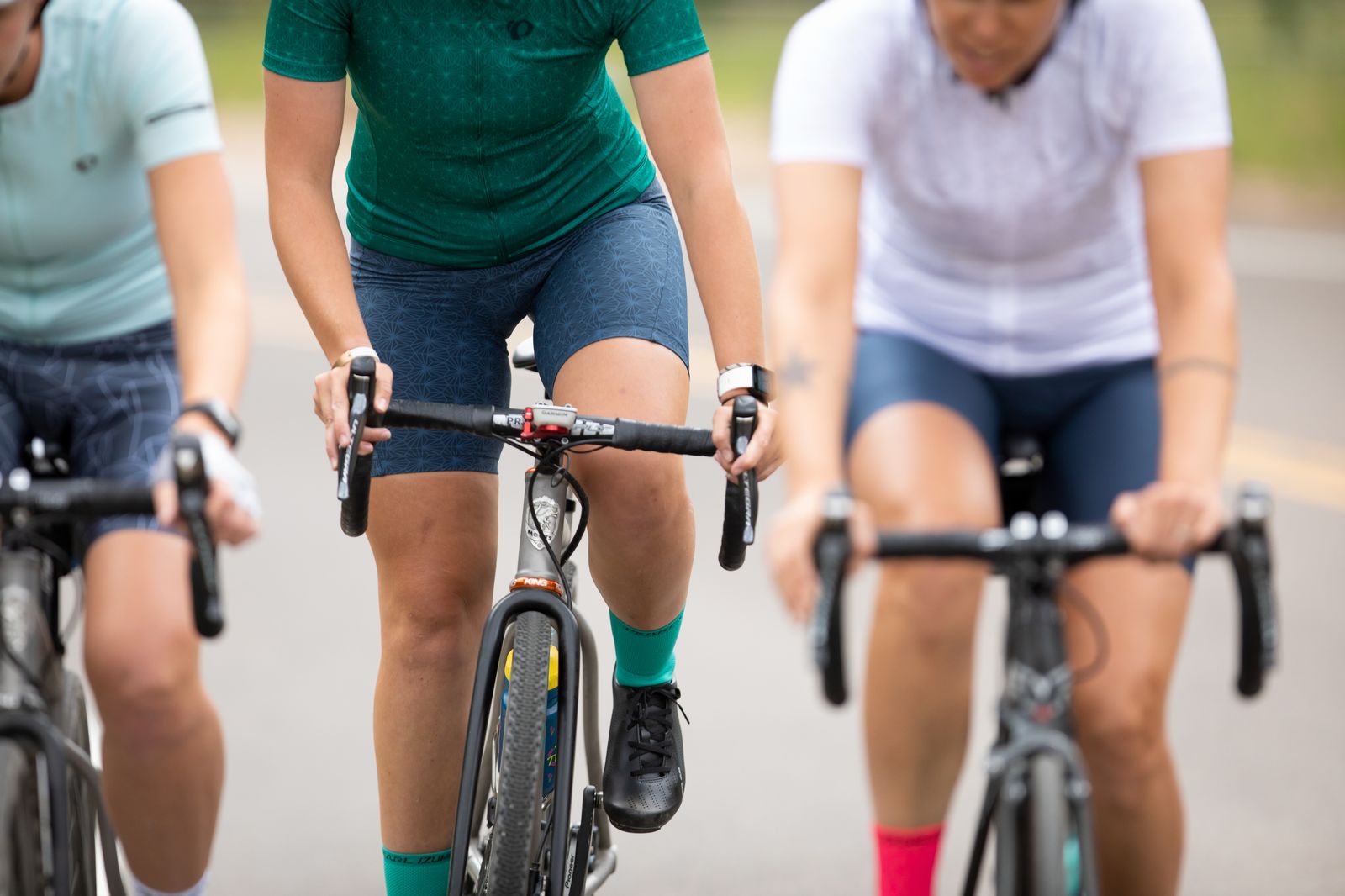
Buyer’s Guide for Cycling Shoe Insoles
Assess if you actually need them. Not everyone will need a shoe insole to add comfort and stabilize certain muscles in their legs. But if you do suspect that insoles will help you avoid knee pain or hip instability, or you end every ride with aching feet, then they’re a relatively inexpensive option to try. Additionally, you may simply want new insoles to refresh an older, smellier pair of cycling shoes, since generally, the insoles that come with the shoes are removable and easy to replace.
Check the size twice. Note that many of the sizes listed are in European men’s sizing, so you may need to convert those sizes to women’s or men’s US sizing to figure out what you need. If you’re between sizes, it’s always a good idea to size up, since you can trim insoles but you can’t add material. Most insoles are sadly not returnable.
What’s your arch style? Do you have flat, medium or high arches? Unless you have very ‘medium’ arches, you’ll likely want an insole that specifically has a high or a flat option, for the best cradling effect and foot support.
What are the key features? Think about where your hotspots are on your foot, and try to pick an insole that matches your issues. (More on that below.)
Try one pair at a time. Have a few different pairs of cycling shoes? Great, but start with a single pair of insoles rather than committing to purchasing three pairs. Try them for a few rides before getting the same pair for your other shoes.
Frequently Asked Questions about Cycling Shoe Insoles
Do I need insoles for my cycling shoes?
Most cycling shoe insoles are pretty basic, meaning they’ll work for most riders, but not for all. For one Bikerumor editor, the Bontrager-Superfeet insoles better positioned his knees so that they’re moving up and down in a straight line, which improves long term comfort on all day rides. More importantly, it keeps his knees from brushing against the top tube constantly. That becomes more important if someone has a frame bag on the bike.
For other riders, different insoles can eliminate hot spots on feet, make issues like bunions more comfortable, and provide arch support for those with higher or lower arches.
What do cycling insoles do?
It depends on the type of insole. While they’re all generally focused on providing more comfort and stability in your shoe, some are designed to hold in heat for cooler weather rides, while some are designed to do the opposite and dissipate heat for warmer climates.

Should my cycling shoes include different insole options?
Some do, but a shoe isn’t ‘bad’ or ‘cheap’ if it doesn’t come with different insole options. Since many people are just fine with standard insoles, not sending extra pairs may be more environmentally friendly, and lower the overall cost of your shoes.
Should I replace insoles regularly?
Insoles can make a big difference in your bike fit and foot/knee comfort, but because they’re made with foam, they do deteriorate over time. (Not to mention they can smell absolutely terrible after a while!) Replacing your insoles every one to two years can make a pair of cycling shoes last for much, much longer.
Do I need insoles for all my different cycling shoes?
Not necessarily. Generally, you really only need insoles if there’s an issue you’re dealing with. And because different shoes fit differently, not every shoe will have the same pain point. And certainly as you shift from road to MTB shoes, the materials, construction, and stiffness will be wildly different. If one shoe bothers you but the others are fine, try new insoles just on the uncomfortable shoe first. You may decide you love the extra support and want to replace them on all of your shoes, but most of us at Bikerumor only replace insoles on shoes that are a little uncomfortable. If it ain’t broke, don’t fix it!
What do I do if my shoes smell terrible?
Unfortunately, this is just a fact of life with cycling shoes. It’s not always a pretty picture. But you can make cycling shoes smell better by washing them (and the insoles) regularly in warm soapy water, hosing them down after muddy rides, and even getting a shoe dryer so they spend less time damp. And replacing insoles can do wonders for the smell, since that’s where most of that stink lives.
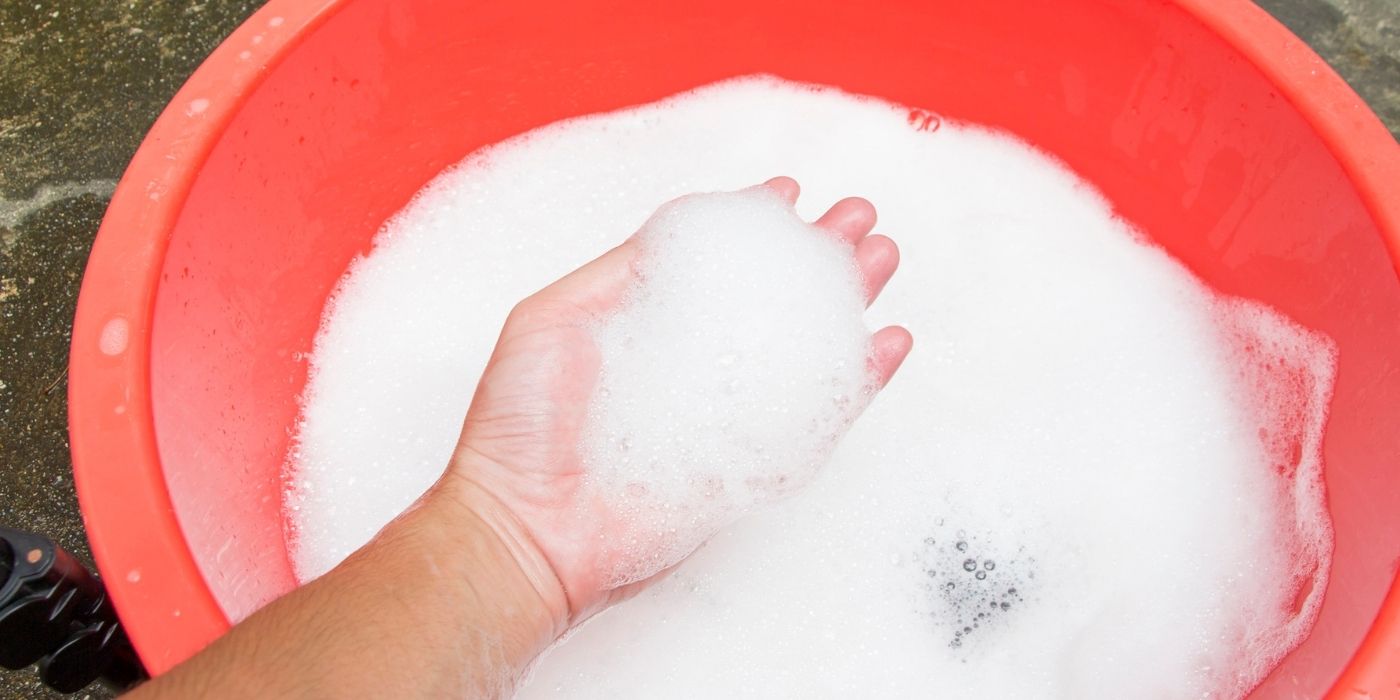
How do you clean cycling shoe insoles?
Simply pull them out of your shoes and soak in warm water and dish soap, scrubbing a bit with your hands if needed. Make sure they dry fully before they go back in your shoes, though, since damp insoles will quickly end up smelly and potentially even moldy.
Arch support versus metatarsal button support versus basic cushioning?
You can easily end up in paralysis by analysis when you start looking through insole options. Fortunately, most brands only offer one or two bike-specific insole option, though most are more focused on basic cushioning, with a secondary focus on arch support.
- Arch support will help with pain in arches by adding support, obviously, but will also be your best bet for dealing with nagging knee pain…or just trying to straighten out your knee’s vertical path
- Metatarsal support will help avoid hotspots on the pads of your feet
- Memory foam will add more overall comfort, especially if you’re using a particularly stiff road shoe
While cycling shoes in general have become much more comfortable over the years, we have found that overly stiff shoes with a very flat sole can sometimes just kinda put your feet to sleep, even if you’re not over tightening them. Adding a little cushion or shaping to the insole usually helps. But, also, if you’re not racing at the top level, you probably don’t need the stiffest possible race shoe, either.
What cycling shoes should I use?
We’re glad you asked! We recently rounded up our favorite road and mountain bike shoe options here:
